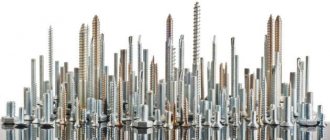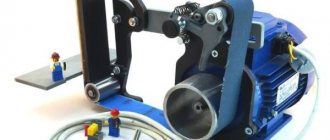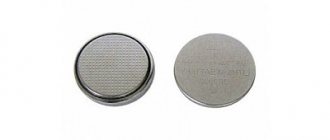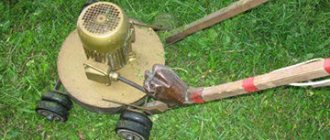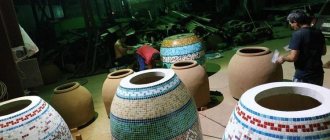Each of us has done renovations to our premises at least once. And there were times when it was necessary to rise to a certain height. Constantly placing a chair is not an option, and a stepladder is too large and interferes with work. At such a moment, special construction stilts are perfect. They are practical and compact. And their most important advantage is the ability to select a certain optimal height that is convenient for work. Such a tool will be useful in any home. But not many people know how to make construction stilts for the home and what material to use.
Pros and cons of this mechanism
The main advantages can be considered factors such as:
- fast speed of work, convenient and quick replacement of anything at height;
- ease of work, since the performer can move to the desired place of work at any time without any problems;
- height adjustment of the instrument, adapting to any height of a person and the height of the room.
The disadvantages include several points. For example, the high price of equipment. You should also take into account that special seat belts are required for operation. When performing work at height, there must be a flat floor surface, as you can trip and fall, causing harm to the body.
Simple option
If you do not have the opportunity to seriously engage in making stilts, you can whip up one from scrap materials.
Take round hardwood poles with a diameter of 4 - 5 cm, 20-60 cm longer than the average person's height. Nail the prism-shaped footrests (or just bars) with several large nails or screw them. The nails should go right through, bend them, and hammer them in.
The level of the footrests is for beginners 20 cm above the ground, for experienced ones - up to 70 cm. Leave the upper ends sticking out above the shoulder.
Necessary parts for construction stilts
Today there are a large number of described mechanisms. And in order to make construction stilts with your own hands, drawings are simply necessary. To make this tool you will need tools. Be sure to prepare:
- hard wooden beams with sections 50 by 50 and the required length of about 250 cm;
- base board;
- sheet rubber;
- fastening materials of various types;
- construction stilt drawings.
Drawings for making stilts
So, the basis for the entire structure is a stand, attached to the foot through rubber gaskets using corners. A sole, a support rail and tapes and straps are attached to the top of the rack to secure the leg and foot.
Rice. 3 Full detailing for making construction stilts with your own hands.
Rice. 4. Dimensions of parts for making stilts
Shifting the corner from the center of the rack - to prevent overexertion of the legs. A very important point when working on stilts.
Rice. 5 Shifting the center to unload the feet.
We shift the middle of the width of the foot forward by about 15 mm from the common middle.
Rice. 6 Shifting the center to relieve the feet. Detailing.
Support rail attachment point for fixing the leg using straps.
Rice. 7. Support rail for fixing the leg.
Stilt assembly sequence
First of all, you need to prepare the wood for use. It is necessary to process the material, and this requires smoothing the wood using a plane. The base boards must be treated with sandpaper and impregnated with a special solution. Next, to make construction stilts with your own hands, you need to attach paws. They are fixed with screws and nails. Fastening occurs at the ends of the beam. The paws attached to the top should be equipped with rubber gaskets for greater stability.
In order to make construction stilts with your own hands, you need to make and attach footrests. These areas will be protruded by the worker’s feet. The first thing to do is pre-drill holes for better fastening and installation. Additional holes should be made at a short distance from each other. This is done to further change the height of the stilt. The minimum height of the first hole is from 10 mm to 70 mm. This allowed distance is used for better stability and good balance. The footrests themselves are made of thick timber, the size of the foot.
The next step is to fix the footrests using bolts and nuts at the desired height. At this point, DIY construction stilts are considered ready for use. Of course, this tool is primitive and not suitable for professional use, but it is well suited for home work.
Construction stilts: device, application and DIY production
Stairs and scaffolding are, perhaps, an integral element of any finishing work. Because these tools are time-tested. Although we must admit that they are not always convenient. But new alternative options add convenience in this matter. And these are, for example, construction stilts. That is, one of the means of “small mechanization”, which is now quite widely used by finishers.
Construction stilts and their design features
Construction stilts in their design consist, as a rule, of the following elements:
- feet with customizable size;
- sole pads;
- a unit that allows the feet to turn;
- height-adjustable rods - “legs”;
- footrests;
- running rails;
- fasteners.
The feet provide stability to the structure due to their area. Also, the soles have linings made of wear-resistant material, which has increased friction. It prevents slipping and ensures safe movement.
Modern models, as a rule, also have a foot rotation unit. It makes the movement easier, that is, it makes it less “wooden”. To increase safety, protection is provided against accidental pressing of the supporting surface.
The “legs” of the structure are most often made of aluminum. The result is lightness and relative strength. The height is adjusted by a corresponding mechanism and fixed with a clamp. But in expensive models, rack and pinion transmission is used. It allows you to adjust the height remotely.
The footrest is attached to the upper section of the bar. It provides support for the worker’s legs. It is usually performed with a corrugated surface to prevent the foot from slipping. Additionally, it has straps for fixation.
Running rails connect the structure to the lower leg. They are secured to the worker's leg with belts. To provide additional stability. The slats can be adjusted in height.
Technical characteristics and price of construction stilts
In principle, it is clear that different models differ in their parameters. But on average, construction stilts have the following characteristics:
During production, this equipment is subject to quite specific requirements. On the one hand, all materials must be light. This makes the design easier to carry and use. On the other hand, some components are made of steel to ensure reliability.
When purchasing, you need to take into account the intensity of the upcoming use. For example, products from the SkyWalker line from the American manufacturer Marshalltown are suitable for professional use. Price - 50-55 thousand rubles. Because high quality aluminum and composites are used in their manufacture.
But for occasional use, the budget version from the Chinese manufacturer Stilts is quite suitable. The price varies between 7-15 thousand rubles.
Features of use
Construction stilts are demanding regarding their correct use. Safe use of this equipment requires some experience and training. In this matter, as a rule, you should pay attention to the following aspects:
- preparation, familiarization with instructions;
- correct positioning of the center of gravity;
- walking in compliance with the techniques recommended by the instructions and experts.
Construction stilts are supplied and transported assembled. As a result, at the stage of preparing them for work, you only need to adjust the length of the rods and running rails. Moreover, this is done with strict consideration of the person’s anthropometric data and the height of the upcoming work.
As a rule, maintaining balance requires some skill. Moreover, the center of gravity should not deviate from the longitudinal axis. Because any bending or shifting risks falling and injury. The risk increases as the length of the rods increases. If they are lengthened by a large amount, then wide feet are used. They compensate for height, allowing certain deviations of the center of gravity.
Walking requires training. It is carried out in the presence of an assistant in compliance with safety measures. The design specificity of the feet does not allow them to slide on the floor. A step is taken by moving the leg forward. To maintain stability, your stride length should not exceed half the sole size.
What to pay attention to when adjusting construction stilts
To choose and use construction stilts correctly, as a rule, we proceed from the following factors:
- anthropometry of the employee, including his weight;
- height of the working room;
- floor condition;
- features of work clothes;
- employee's health condition.
Anthropometric data takes into account, in particular, the size of the foot, the length and girth of the lower leg. The length of the rods is adjustable taking into account the height of the person. Moreover, it should be remembered that weight directly affects the center of gravity. If it is excessive, the risk of falling increases.
When adjusting the length of the rod, the required height for work is also taken into account. In particular, in this matter, pay attention to the position of the hands. During work they should not experience additional stress. This occurs, for example, with frequent lifting or incorrect bending angle.
An important element affecting the safety of using stilts is the condition of the floor. The presence of irregularities, cracks, and thresholds is not allowed. Moreover, pay attention to ensure that there are no oil or grease puddles. Construction stilts are very dangerous to place on steps.
The worker's clothing should be comfortable and practical, because the design of construction stilts does not allow bending down and picking up something. It should allow you to carry all the tools for work on yourself. But in some cases, using stilts, it is still more convenient to work with a partner.
In addition, when working on stilts, the health status of the master should be taken into account. For example, if there are vascular problems, prolonged clamping of the shin can be dangerous. Moreover, there are risks for those who have blood pressure problems.
Scope of application of construction stilts
Construction stilts are particularly effective, for example, in the following cases:
- work in the corners of rooms;
- finishing of niche elements of the room;
- the presence of non-removable interior items - fireplaces, boilers;
- ceiling work, painting.
In these situations, installing conventional structures or stairs can be difficult. But stilts can be used even there. Because they allow you to occupy a smaller area and still work at the desired height. In certain situations, construction stilts are used not only indoors, but also outdoors. A prerequisite is a suitable surface without unevenness.
DIY construction stilts
In some cases, it is more expedient to make construction stilts yourself. This option is optimal if one-time or occasional work with their use is expected. The process itself is quite simple and only requires attention to detail. If necessary, a drawing or diagram can be found on the Internet.
To make a simple design you will need:
- two duralumin pipes with a diameter of 100 mm;
- two pairs of soles made of wood or multi-layer plywood;
- wooden racks;
- fastening straps;
- rubber pads.
Instead of duralumin pipes, the use of wooden blocks is allowed. But their cross-section must be square. To ensure resistance to loads, high-strength types of wood are used.
From the upper end, a pair of foot soles is attached to the pipes (bars) on the side. Moreover, their dimensions should take into account the comfortable placement of the worker’s foot. It is recommended to make lateral connections, as a rule, with bolts and angles. The footrests themselves are additionally equipped with fixation belts.
Ready-made homemade stilts can be seen in the following video:
Support soles-platforms are attached from the lower end. To prevent slipping, they are equipped with rubber pads. The area of the supports should take into account the length of the rods.
Running rails are attached to the sides of the rods. They are made of wood. Moreover, the length depends on the location of fixation. Such structures can be attached to the shins or to the belt. Sometimes they are crossed and attached at the neck.
The advantage of self-production is the availability of materials and the relative ease of operation. This allows you to get good results at low cost. However, during manufacturing it is important to take into account the reliability of the design and the practicality of its use.
Selection of store-bought construction stilts
When purchasing such a product, first of all, you should pay attention to the brand of the instrument. Devices made in America and Europe are very popular. Next, you need to pay attention to the optimal permissible weight. It must be 100 kg and above. This characteristic is necessary for safety reasons. Also, when choosing this product, do not forget about the adjustable height of the feet. It is this adjustment that will help you choose the right and correct height for work.
The presented tool is very useful in everyday life. Even hand-made construction stilts will last for many years. They make it very easy to renovate a room. Especially if the repair involves painting or plastering walls, as well as working with suspended ceilings. Lightweight work with the help of stilts will now be completed twice as fast as it was previously.
Where can they be used?
It makes sense to use construction stilts in hard-to-reach places where it is impossible to install more load-resistant building structures - stairs/ladders, scaffolding, trestles, etc. such places are most often:
- Corners of rooms and halls (when installing suspended or suspended ceilings, in finishing, plastering and electrical installation work without the use of massive tools that cause vibrations during use);
- Finishing of niches, alcoves, bay windows and other perimeter elements where the use of stationary high-rise devices is impossible;
- Internal construction and repair work in rooms where there is furniture or other interior items that cannot be removed from the room, for example, fireplaces, wall-mounted water heaters, etc.;
- Mechanized work on painting ceilings using a spray gun (with manual painting, the lack of a working platform will cause the worker to constantly move around the floor, which is tiring).
In general, the effectiveness of construction stilts increases when the labor intensity of the construction and repair transition at a certain high-altitude section of the room increases, and the need for tools that should be at arm's length (and horizontally, not obliquely) is low. Otherwise, you will have to constantly move on stilts, and this, as noted earlier, is not always convenient.
The main technical characteristics of stilts are:
- Load capacity, kg. Devices are produced that allow a load of at least 110 kg.
- Sole sizes range from size 38 to size 45.
- Adjustment height of running rails, mm – 380…1000.
- Maximum application height, m – 2.65…3.71.
- Own weight, kg – 5.8…7.3.
When choosing a manufacturer of construction stilts, you should take into account the intensity of use of the devices. For example, professionals who often use such products give preference to the SkyWalker line of stilts from the American company Marshalltown. These products are distinguished by reliable assembly, and high-quality aluminum and composite materials are used in the manufacture of components. The price of such products is 49,000... 54,000 rubles.
The budget niche of construction stilts is represented by products from the Stilts brand (China). Their price, depending on the standard size, is in the range of 7,000...15,000 rubles.
Leg attachment
Foot toe attachment
It should hold the toe firmly in place. Adjustable to fit and detachable.
Heel fastening
It is optimal to fasten diagonally.
It is adjusted to the leg and fixed.
Calf Attachment
This is done using a central tape.
Attach exactly as shown in the figure below. This is optimal and reliable for fixing the foot. Unfastened.
Rice. 8. Unit for fixing the foot and leg to the stilts.
To fix the knee, a cardboard gasket glued with tape was used. But it is better to use 10 mm isolon or other similar materials.
Rice. 9. Support rail for fixing the leg.
Option 2 stilts
Theoretical diagram of stilts with height adjustment.
Source
Design
Externally, such stilts at first glance resemble elements of some kind of exoskeleton: articulated, rotating (though only in one plane) feet, adjustable “legs” in length, equipped with fastening devices, clamps for fixing the worker’s legs. All these parts are functionally interconnected in order to ensure the integrity of the construction stilts during movement.
The most convenient construction stilts for use include the following units:
- Adjustable feet in length (and sometimes in width).
- Soles with linings made of friction material with sufficient wear resistance, and some manufacturers also include a replaceable pair of such linings in the kit.
- The foot rotation unit, which, in turn, consists of a pin, two bearing sockets and return springs, which ensure the safety of using stilts in case of accidental pressing of the worker on the supporting surface of the feet.
- Aluminum rods, the height of which can be adjusted using an eccentric clamping mechanism. In more expensive models of construction stilts, the mechanism can be controlled remotely using a rack and pinion transmission.
- Footrests with a corrugated surface, which are attached to the upper end of the bars, and serve as support for the worker’s feet.
- Running rails that connect the rods to the sockets for attaching the equipment in question to the lower leg. The slats have the ability to discretely change their height according to a person’s height (3…6 positions).
- Fastening straps that wrap around a worker’s leg. They must be made from elastic rubber-fabric compositions that are tested to five times the tensile strength (whether this is true or not, one can only hope).
When producing these products, their manufacturers are guided by conflicting requirements. On the one hand, the mass of stilts should be minimal to facilitate their practical use. On the other hand, some structural elements - springs, rack and pinion mechanism - must be made of steel for reliability purposes.
Construction stilts are supplied assembled, so they do not take up much space in the overall equipment. Before using them, you only need to adjust the height of the rods and running rails to the specific height of the room and the anthropometric data of the worker.
Exploitation
Getting used to using construction stilts can be difficult, since if you have insufficient operating experience, falls and possible injuries are possible! Features of use are directly related to the design of the device, where the center of gravity cannot be shifted along the conventional longitudinal axis. However, stability, at the expense of functionality, can be increased due to a longer sole length. At the same time, too long soles will not allow you to get close to the wall surface being treated. Despite this, models with larger soles are the most popular today.
Considerable dexterity from the master will also be required when moving, since the tool prevents the feet from slipping! It is necessary to move by alternately pushing each bar forward so that the step of movement is not more than half the length of the sole. It is better if, before using the device for the first time, in addition to reading the instructions, you practice walking on stilts, and with an assistant.
It is not recommended to move in reverse, as this approach carries a high risk of falling!
The choice of model, standard size, as well as further adjustment of construction stilts must be carried out, taking into account the following points:
- Weight, girth and height of the lower leg, as well as the size of the worker’s feet;
- A health condition where, in a person with vascular insufficiency of the peripheral circulatory system, prolonged clamping of the lower leg can cause high blood pressure;
- The height of the room where finishing activities should be carried out. So during the work, the master’s hand, when in contact with the highest point, should form an angle of no more than 150-160 degrees between the elbow and shoulder joints ;
- Shoes and work clothes must be selected appropriately. For example, the absence of shoulder straps or pockets for tools will make work extremely inconvenient, since it will simply be impossible to get tools from the floor or other surfaces. In addition, the shoes should not be wet, otherwise the grip on the sole will be weak;
- The flooring should also not have any grooves, cracks or irregularities. The presence of oil and grease stains on the surface is also excluded!
It is not recommended to use construction stilts on stepped areas.
What kind of object is this?
Thanks to construction stilts, a person can rise to a height of 40 to 100 cm, and at the same time feel absolutely free.
Construction stilts are also called drywall stilts; they are most popular in America and England. They are two supports on which the feet are attached. However, this is their most primitive definition. Modern construction stilts have many models from various manufacturers.
As practice shows, having stood on construction stilts for the first time for 5-10 minutes, you can easily master the technique of walking on them and easily carry out repair work at height.
Choosing stilts,
Keep in mind that they have a weight limit. They can be used by a person weighing no more than 105 kg.
When buying stilts for repairs, you need to take into account that they come in different heights:
- up to 265 cm;
- up to 285 cm;
- up to 310 cm.
Please note that the greater their height, the harder it is to work on them. So, if you are new to playing this instrument, then you should not immediately choose the highest ones.
Drawings for making stilts
So, the basis for the entire structure is a stand, attached to the foot through rubber gaskets using corners. A sole, a support rail and tapes and straps are attached to the top of the rack to secure the leg and foot.
Shifting the corner from the center of the rack - to prevent overexertion of the legs. A very important point when working on stilts.
We shift the middle of the width of the foot forward by about 15 mm from the common middle.
Support rail attachment point for fixing the leg using straps.
Leg attachment
Foot toe attachment
It should hold the toe firmly in place. Adjustable to fit and detachable.
Heel fastening
Calf Attachment
This is done using a central tape. Attach exactly as shown in the figure below. This is optimal and reliable for fixing the foot. Unfastened.
To fix the knee, a cardboard gasket glued with tape was used. But it is better to use 10 mm isolon or other similar materials.
Option 2 stilts
Theoretical diagram of stilts with height adjustment.
Manufacturers involved in the creation of “small mechanization” devices for performing interior finishing work have recently begun to produce a good alternative to the usual stairs and construction scaffolding. We are talking about construction stilts, whose appearance partly resembles the well-known devices of circus performers. In today’s material we will look at the design and operation features of the device, understand the practical value of the device, and at the end we will attach instructions for making it yourself.


